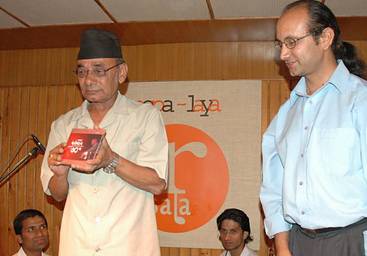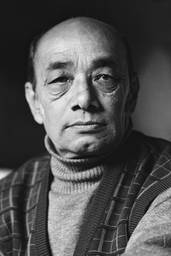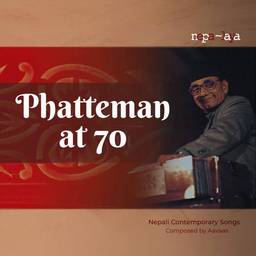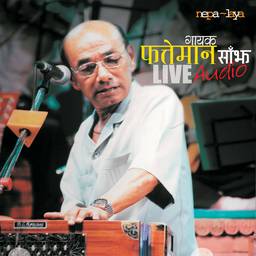GAYAK PHATTEMAN
Gayak Phatteman (Phatteman Rajbhandari) was a living history in the Nepali Musical Scene. The depth of his vocal was a representation of Nepalese life in diverse forms. The simplicity of his songs and the aura it carried was an excellent example to a statement - "music has no boundaries".
The capacity in his vocals to keep the listeners craving for more could not be undermined.
His songs were stories about - pain, hardships, love, laughter, hope, and more about life.
Coming from the Bhandari (storekeeper) Family to Lord Pashupatinath Temple, Gayak Phatteman started singing while a small child. Singing Bhajans to Lord Pashupatinath was what he did then. Maybe Guru Das Gokhle (guru of Pandit Jasraj) had identified small Phatteman's talent. He was offered to be taken to India by Guru Das Gokhle, but due to family reasons Phatteman could not do so. But then he had the opportunity to spend some months with Guru Das Gokhle during his stay in Pashupatinath. The time spent with Guru was assumed to have taught Phatteman the techniques of Music, as this was the only training (if it could be called so) Phatteman had attained in his life.
An individual who had been singing for six decades, at 70, was still singing at an age when most people retire... Having started his singing career at the age of nine, with religious hymns for Pashupatinath, his songs had been able to incorporate all age groups.
Classic Hits by Phatteman
"Yasto Pani Hundo Rahecha"
Written by: Yadav Kharel
Composed by: Nati Kaji
"Rato Ra Chandra Surya"
A duet with Amber Gurung
Written by: Gopal Prasad Rimal
Composed by: Amber Gurung
"Banai Khayo Dadhelole"
Written by: Kali Prasad Rijal
Composed by: Narayan Gopal
"Jindagi Ko Panabhari"
Written by: Bhairav Nath Rimal
Composed by: Narayan Gopal
"Marna Baru Garho Hunna"
Written by: Tirtha Raj Tuladhar
Composed by: Nati Kaji
"Sannanni Ko Galaima"
Written by: Sahadev Samsher Rana
Composed by: Nati Kaji
ALBUMS RELEASED
GAYAK PHATTEMAN AT 70
The album named "Gayak Phatteman at 70" was Phatteman's debut recorded album.
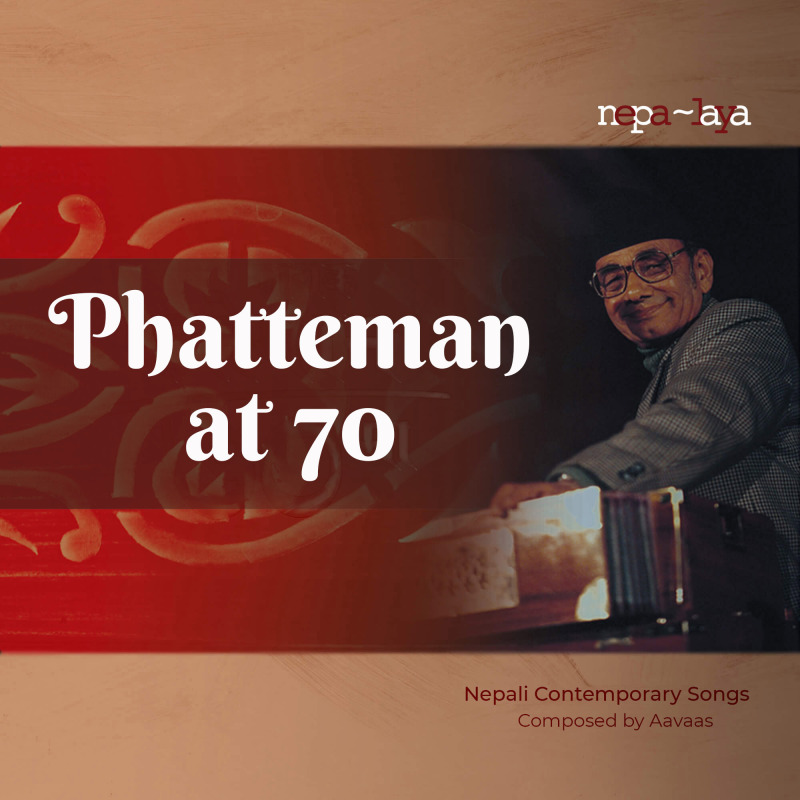
In this debut record, youth composer Aavaas helped Phatteman to remarry his early Nepali Adhunik styles and the universal romantic sentiments with a strong juxtaposition to the social suffering and angst of Nepal. The influence of the classical devotional ragas resonated in Phatteman's style. Amazingly his vocals had hardly dropped from his yesteryears even at 70.
Listen to "Gayak Phatteman at 70":
Phatteman was a very well loved singer and a successful radio artist who was one of the favorite singers to the audience and to many Nepali Adhunik composers and singers with whom he had spent many intimate musical and private moments as professionals and friends. However, the chances of recording a solo album never crossed his path. He kept singing in the radio, the audience kept admiring but times kept changing.
The romantic singer was gradually pushed off-stream for many years in the growing competitive world of hectic and younger recording artists as newer recording hardware and software overshadowed the traditional analogue recording systems, orchestration, concept and artists like Phatteman who were the key artists of the Nepali Adhunik genre.
In 2002 Nepalaya with the effort of composer Aavas rediscovered the artist who was already suffering from numerous health problems and opting an elusive lifestyle. The same year a national musical tour was organised by Nepalaya for the veteran singer to once again blaze out his 'golden hits' to awaken the nostalgic past and the heroic present among his audiences. It was a great landmark for Phatteman's personal history.
He cried amidst an audience of thousands while singing his favorite 'Marna baru garo hunna…' (It is rather easy to die…) at a live concert in Palpa.
The tears proved symbolic. It was a reawakening of a new era. Very soon composer Aavas, driven by Phatteman's unconditional love to the Nepali Adhunik forms and his own quest to revive this genre of music, started writing scores and arranging orchestration for the 'golden singer' and recording it using only acoustic instruments and recording systems.
A rigorous workout between these two musicians for months finally resulted in the production of this debut album which was based on the lyrics of both the underground and known lyricists and poets, some of who were also making a debut entry into the world of song writing.
After the project was complete, Phatteman went back to his daily routine of waking up at four in the morning and taking a ritual walk at Pashupatinath Temple for an hour and coming back to "flirt" with his Harmonium, Sitar and Tabla. In most full-moon evenings, he was found singing Bhajans at Kirateshwor temple evoking the god of performance - earning love and awe from his audiences if not gold, for his golden voice.
Kina Aauncha a song from Phatteman's album was released for Radio Broadcast on 10th of March 2005.
PHATTEMAN IN PALETI
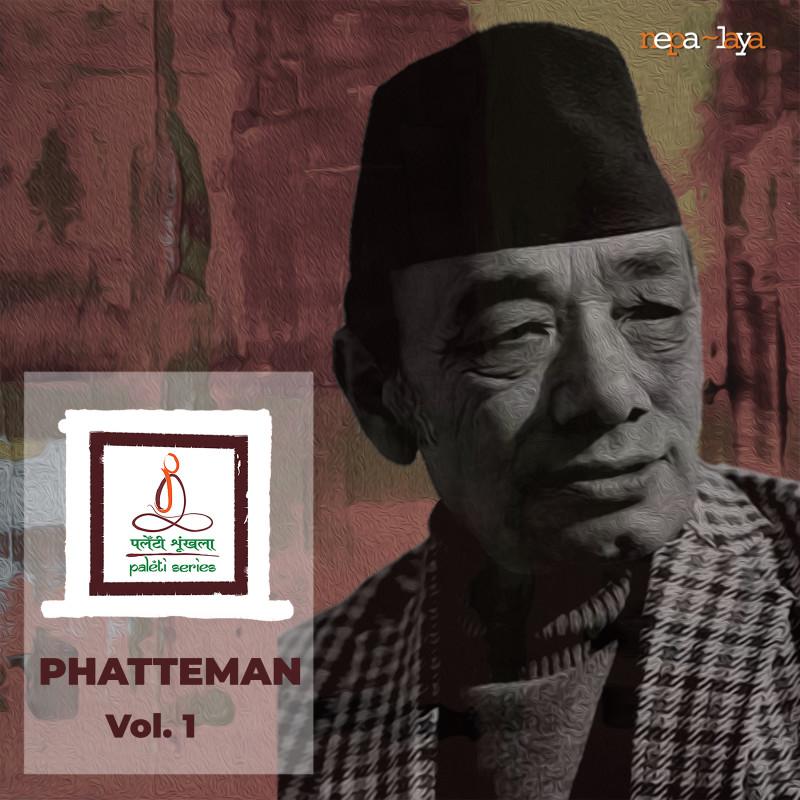
Phatteman in Paleti (2007, Vol. 1)
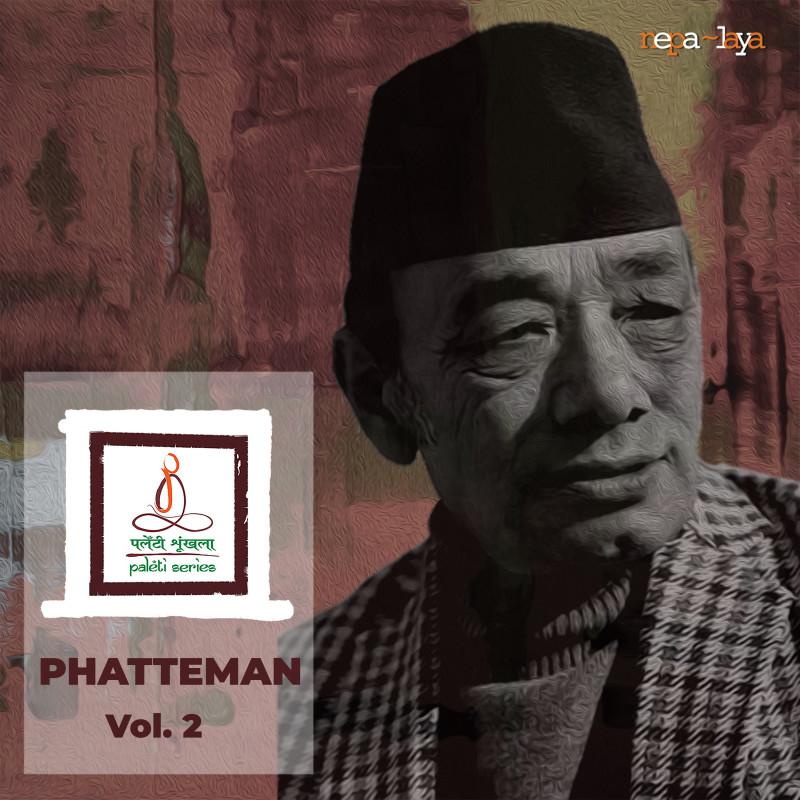
Phatteman in Paleti (2007, Vol. 2)
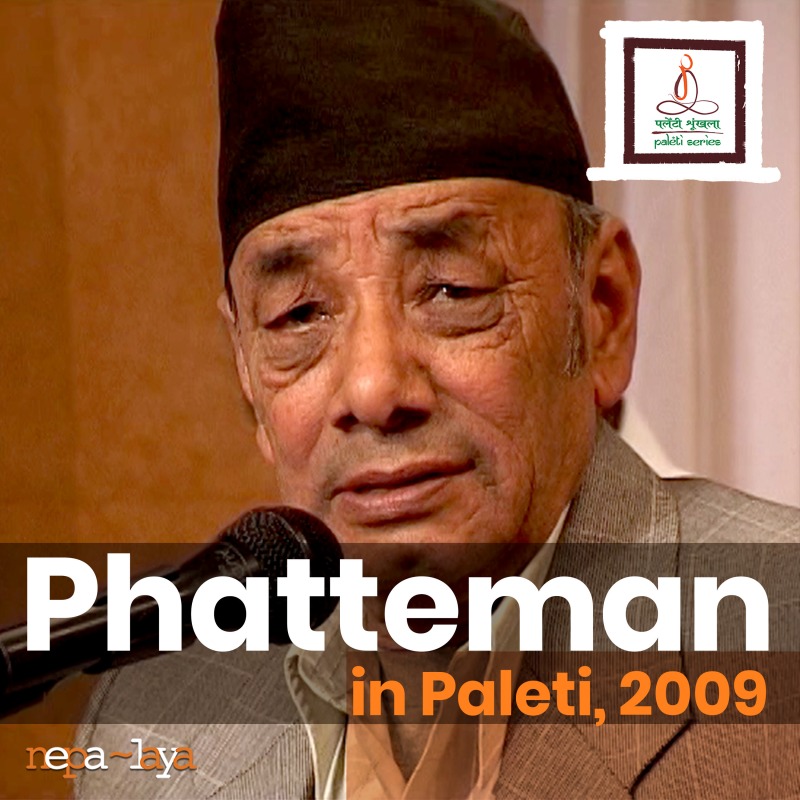
Phatteman in Paleti 2009
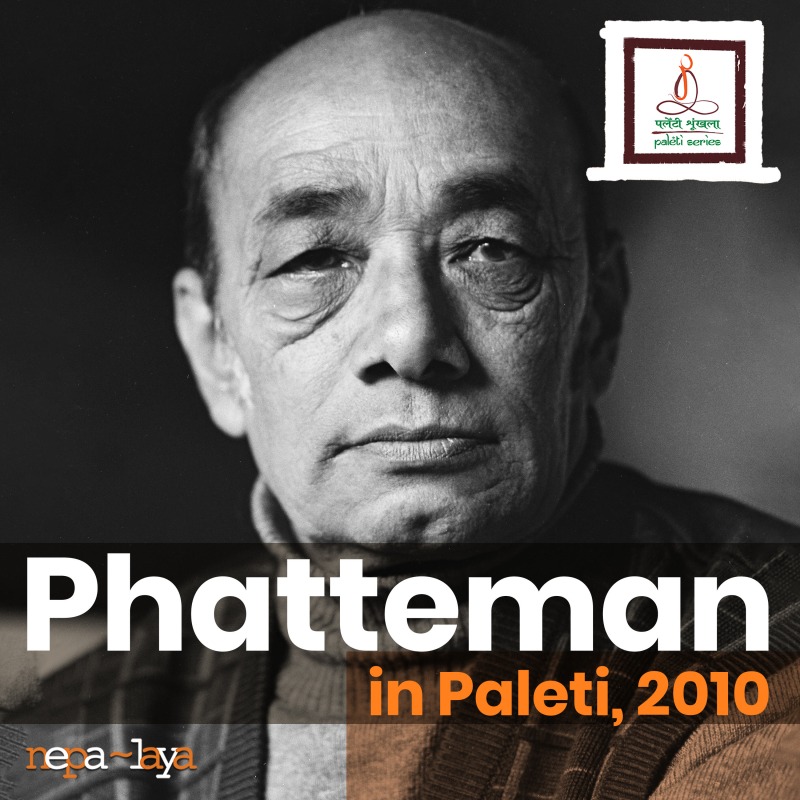
Phatteman in Paleti 2010
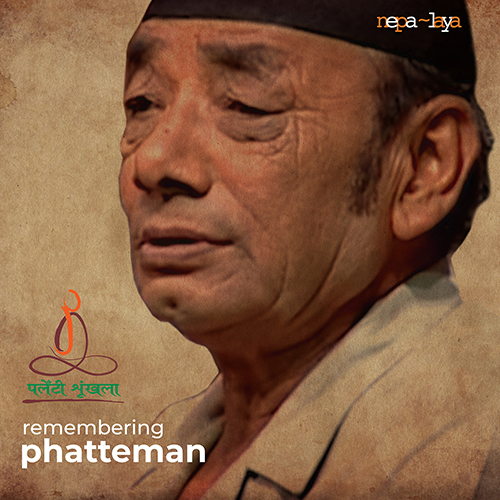
Remembering Phatteman
A tribute album celebrating the musical legacy of Gayak Phatteman.
Phatteman's Radio era recording of various songs has also been compiled and released.
- Santa Hridaya - Devotional Songs Collection
- Deu Darshan - Lyrics by Bhairab Nath Rimal "Kadam"
- Prem Pida - Radio Nepal recorded songs collection.
- Gayak Phatteman Sanjh - Live Audio.
SOLO SHOWS
Gayak Phatteman Sanjh, 2002
At the age of 68, Gayak Phatteman made a solo debut on Stage.
"Gayak Phatteman Sanjh" was first held on the 10th of August 2002, at the Birendra International Convention Centre. The success of the show encouraged the organisers - Nepalaya to move ahead.
Even at a time when the nation was passing through a difficult phase, Nepalaya had geared up to take his show to various places within and beyond Nepal, all to the wish of the respected Gayak.
SOLO Concert TOUR
Gayak Phatteman Sanjh - TOUR travelled to:
- 📍Hetauda - 26th October 2002
- 📍Narayanghat - 28th October 2002
- 📍Pokhara - 30th October 2002
- 📍Palpa - 1st November 2002
The response in all these places was overwhelming.
AWARDS AND ACHIEVEMENTS
- 🏆2025 BS - Gold Medal for the best Adhunik performance organized by Radio Nepal.
- 🏆2032 BS - First position in a patriotic song competition organized by Radio Nepal
- 🏆2052 BS - Awarded with "Chinnalata Geet Puraskar"
- 🏆2055 BS - Prawal Gorkha Dashin Bahu
- 🏆2058 BS - Birendra Aishwarya Sewa Padak.
- 🏆2059 BS - Was honored with Shambu Prasad Mishra Smirti Award.
- 🏆2059 BS - Honored by the Narayangopal Sangeet Kosh Award.
- 🏆2060 BS - Awarded with "Image Life Time Achievement Award."
- 🏆2061 BS - Awarded with "Bhupal Man Sangeet Puraskar"
GAYAK PHATTEMAN'S MUSIC
Genre: Nepali Contemporary Music
The year 2007 B.S. (1950 AD) remained as a milestone for Nepal in many aspects. Democracy was established, and thus Nepal joined the rest of the democratic world. 1950 AD always became a reference point for any revolutionary change in each aspect of social and cultural evolution.
Though Music had always been a part of the diverse Nepali Culture, recorded form of music was introduced in Nepal only during the 50s. Nepali Songs then were highly inspired by Hindi Cinema music, thus lacking creative innovation. Nepali Folk based songs remained exception here.
It was only during the 1960s Nepali music started to find an identity. Without bringing change in the conventional thoughts - the modern approach was not possible. The young breed of musicians of that time started adding new, different and more liberal approach to their creations.
The revolutionary inventions in audio technology introduced Nepalese musicians to the western format of Music Arrangement. Gradually Nepali music entered the stream of Polyphony from the conventional Monophony. This process was further elaborated by the Nepali Musicians based in Darjeeling.
Nepali music by then started to develop as a fine blend of folk, classical, and some western styled melody. The use of instruments also became elaborate - folk, eastern classical and western instruments started to fit into the same composition. In India this type of music was boosted by the Booming Film Industry, but in Nepal, this genre of music had to make a mark on its own.
This genre of music was successful in establishing itself as Nepali Contemporary Music (Nepali Adhunik Sangeet).
Leading Practitioners of this genre of Nepali Music included - Amber Gurung, Gopal Yonzon, Narayan Gopal, Bacchu Kailash, Natikaji, Phatteman, Deep Shrestha …
